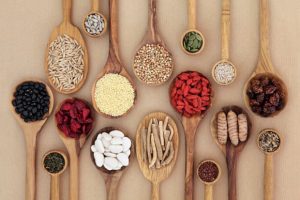 Fatty liver is just what it sounds like: a build-up of fat in the liver. The medical term for fatty liver is steatosis. While a small quantity of fat is considered normal, if more than five to ten percent of your liver’s weight is attributed to fat, you have fatty liver.
Fatty liver is just what it sounds like: a build-up of fat in the liver. The medical term for fatty liver is steatosis. While a small quantity of fat is considered normal, if more than five to ten percent of your liver’s weight is attributed to fat, you have fatty liver.
The liver is a vital organ whose job is to filter all harmful substances from the blood. Conditions such as a fatty liver can inhibit this process.
Advertisement
Fatty liver is reversible if you make lifestyle and behavioral changes. In the early stages, this condition presents with no symptoms and does not result in permanent damage. However, when repeated damage occurs to the liver, permanent scarring can take the place of normal liver cells. This is called liver cirrhosis.
Foods to eat for fatty liver-reducing diet
The following types of food can help reduce the risk of fatty liver and promote liver healing.
Protein: This is considered an essential component of every diet. However, when most people think of protein, they think of red meat. This can actually work against a healthy liver as red meat contains excessive amounts of fat. Instead, choose meats that are rich in omega-3 fatty acids, which have been proven in many studies to promote good liver health. It is a clever idea to reduce red meat intake and replace it with other alternative protein sources. Fish, white meat, eggs, nuts, legumes, and low-fat cheese are good alternatives.
Good fats: While some fats may be bad for you, there are good fats as well. Good fats include monounsaturated and omega-3 fatty acids. Previous studies have shown that omega-3 fatty acids can protect the liver from developing non-alcoholic fatty liver disease. It also aids in the removal of fat from the liver once fatty liver disease has begun. Great sources of omega-3’s include salmon, tuna, and sardines. Monounsaturated fats found in items such as olive oil have also been proven to prevent and treat non-alcoholic fatty liver disease.
Complex carbohydrates: Not all carbohydrates are the same, as these kinds of carbs release glucose into the bloodstream at a steady rate. Complex carbohydrates are minimally processed and have a low glycemic index. By regulating the amount of glucose that reaches the blood stream, they help to keep insulin levels steady, decreasing the chances of insulin resistance. Examples of complex carbs include whole grain bread and cereals, whole rolled oats, brown rice, quinoa, legumes, and sweet potatoes.
Antioxidants: A compound commonly found in fruits and vegetables, antioxidants fight oxidative stress—a type of damage that occurs in cells and can lead to the development of fatty liver disease, aging, and cancer. Antioxidants have been proven in many studies to lower excess fat levels and inflammation that occurs in fatty liver disease. Two antioxidants of note are vitamin E and alpha lipoic acid (ALA)—mostly found in nuts, seeds, vegetables, and meats.
Vitamin C is also a great antioxidant that can be found in citrus fruits.
Foods fatty liver patients should avoid
Much like how there are foods that promote liver health, there are also foods that work against it. Here are some examples:
Sugar: While it is true that the body craves sugar, too much of it can be bad for your liver. Excess consumption of sugar can lead to obesity and diabetes, which are both risk factors for fatty liver disease development. Many studies have linked a decrease in sugar consumption to a healthy liver and the prevention of fatty liver disease. Sugar is hiding in many processed foods such as cookies, cereals, cakes, juice, soda, sauces, and sweetened snacks. Hidden sugar may also be lurking in foods such as salad dressings and ketchup.
Fructose: This is a natural sugar that is found in fruit. However, many companies isolate this type of sugar from corn and use it as an inexpensive additive to sweeten sodas, sauces, syrups, and other foods. The problem is that this form of sugar syrup is very concentrated, containing high amounts of calories and sugar molecules that bombard the system.
Advertisement
Simple carbohydrates: These are overly processed carbohydrates that have none of the healthy nutrients their counterparts have. Simple carbs cause blood sugar to spike, which can lead to insulin becoming resistant over time. This can lead to the development of fatty liver disease. Simple carbohydrates include white bread, white noodles, cakes, cookies, pastries, and crackers.
Trans and saturated fats: These are unhealthy fats that have been linked to the development of heart disease and disease of the blood vessels. Eating foods high in these fats can lead to obesity and increased blood lipid levels, both of which contribute to a fatty liver.
Meat: It’s important to choose healthy sources for your daily protein intake, and unfortunately, red meat is not one of them. Previous studies have shown that high red meat and saturated fat intake leads to an increased risk of liver disease and liver cancer. Red meat is commonly used to make sausages, hot dogs, and cured meats.
